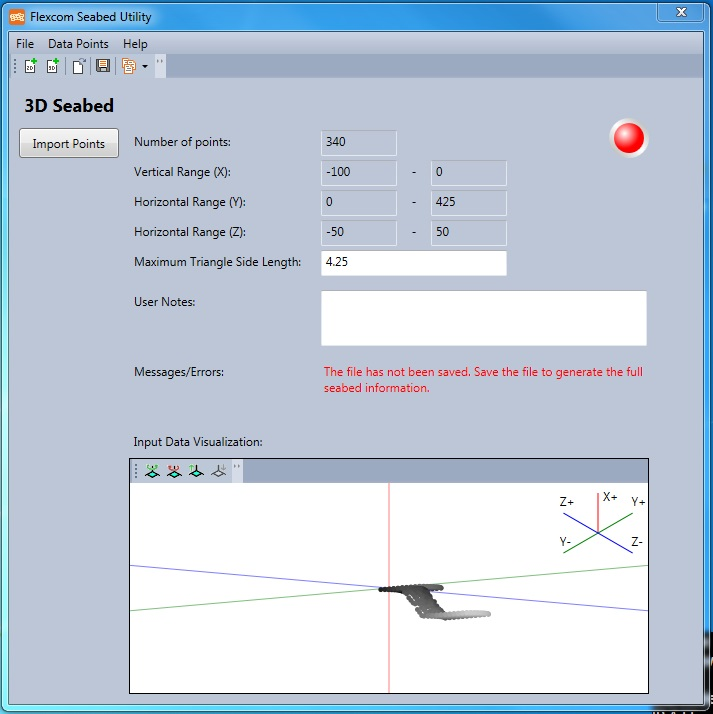This example demonstrates the analysis of a pipe installation over a subsea precipice. The model consists of an installation vessel which lays the pipeline using a series of winch elements.
The pipeline is modelled using four consecutive line sections. The first section represents the initial pipeline configuration. The remaining three sections are comprised of very short elements, to allow for subsequent expansion to simulate the laying process.
The three-dimensional elastic seabed is generated using the Seabed Utility application. Refer to Elastic Seabed Profile for further information on the arbitrary seabed modelling feature in Flexcom.
Metric units are used throughout the model.
Winch elements are normal beam-column elements which have the unique property that their lengths can vary during an analysis. In a dynamic analysis, the variation in length is defined in terms of a maximum winch velocity and a winching time sequence. The time sequence consists of (i) a ramp-up time when winch velocity is increased from zero to the maximum value; (ii) a time during which the velocity remains at this maximum, and (iii) a ramp-down time when the velocity returns to zero. The operation in a static analysis is less complex, with an overall change in length being applied linearly from the analysis start time to the end time. Winch elements can be used, for example, in pipe-laying applications.
Flexcom possesses a powerful 3D seabed modelling facility which can handle complex seabed topographies with ease. You simply specify an arbitrary cloud of data points, and Flexcom’s triangulation algorithm automatically generates a continuous profile via linear or cubic spline interpolation.
Seabed profile data is specified in terms of arbitrary {x,y,z} data points in a standard text file. This generic input style offers complete flexibility, and means that Flexcom can readily accept seabed data from a range of third party software. Flexcom is accompanied by a helpful Seabed Utility application, shown in the figure below. This performs the required seabed meshing, and passes a compiled seabed data file to the main Flexcom program.

Seabed Utility Application